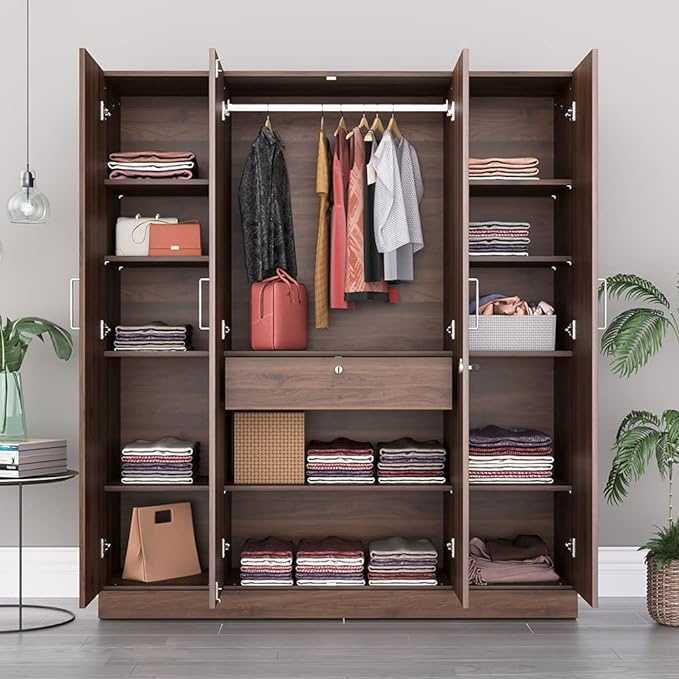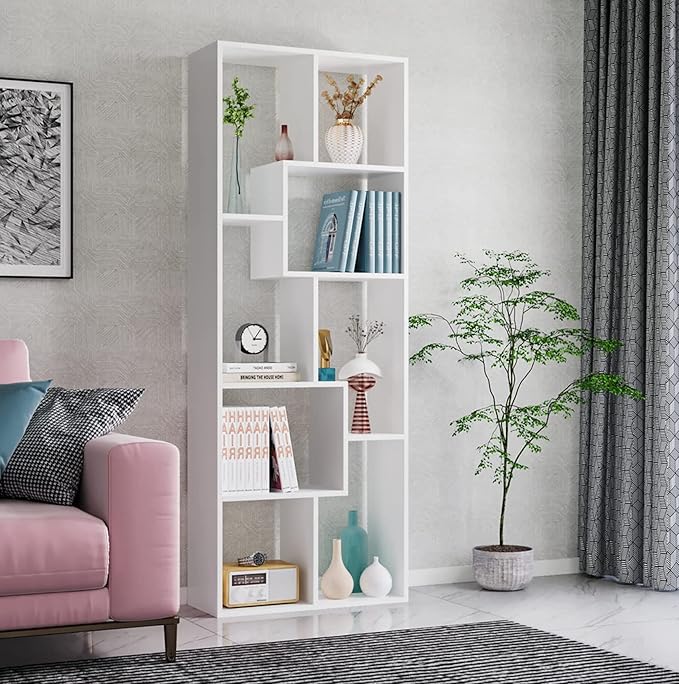Wardrobe design is an essential aspect of home decor that often goes unnoticed. It organizes clothing and accessories, enhancing your space’s aesthetic and overall functionality. A well-planned wardrobe design enhances functionality, making your daily routine smoother. Whether you choose a modern look or timeless design, countless options reflect your style. This article explores wardrobe design, offering tips and ideas to help you achieve an epic look.
Table of Contents
What is Wardrobe Design?
Wardrobe design involves planning and creating storage solutions for clothing and personal items. It involves considering several elements, including space utilization, accessibility, and style. A successful wardrobe design accommodates your needs while complementing your home’s interior decor.
Not only does wardrobe design exceed functionality, but it also reflects personal style and preferences. Additionally, it creates a cohesive and organized space, making daily routines more manageable. Not only does it aim to create harmony, but it also blends style with practicality.
Additionally, this approach ensures a balance that enhances both function and aesthetics. For instance, a well-designed wardrobe not only organizes a room but also transforms it into a haven. Moreover, this thoughtful approach enhances the room’s functionality and creates a calming environment.
Truly understanding the key components of wardrobe design is not only essential but also crucial for success. Furthermore, this knowledge helps ensure you achieve the best and most practical results effortlessly.
Key Elements of Wardrobe
Several key elements contribute to effective wardrobe design. Understanding these elements can help you create a space that is both stylish and functional.
Space Utilization:
Efficient space utilization is crucial in wardrobe design. This means making the most of every available inch. Consider using vertical space by installing shelves or hanging rods that reach the ceiling. Additionally, incorporating drawers and compartments can maximize storage capacity.
Accessibility:
Accessibility is another vital aspect of wardrobe design. Ensure that your most frequently used items are easy to reach. For example, keep everyday clothing at eye level and seasonal items on higher shelves. This approach not only saves time but also enhances the overall organization.
Organization:
A well-organized wardrobe allows you to find what you need quickly. Use dividers, bins, and labels to categorize items. Additionally, consider grouping similar items together, such as shirts, pants, and accessories. This organizational system can make your wardrobe more functional and visually appealing.
Some More Key Elements of Wardrobe
Materials:
The materials used in wardrobe design can affect both its durability and appearance. Common materials include wood, laminate, and metal. Each material has unique benefits and drawbacks, so consider your budget and preferences carefully.
Types of Wardrobe
When it comes to wardrobe design, there are several types to choose from. Each style has its advantages and disadvantages, depending on your needs and available space.
Built-in Wardrobes:
Built-in wardrobes are specifically designed to fit your space flawlessly. They often utilize every inch of available space, making them ideal for smaller rooms. Built-in wardrobes can also enhance the room’s aesthetics, as they blend seamlessly with the walls. However, they may cost more and often need professional installation.
Freestanding Wardrobes:
Freestanding wardrobes offer flexibility and can be positioned in any area of the room. They come in various styles, from traditional to modern, matching your decor preferences perfectly. While freestanding wardrobes offer flexibility, they may not utilize space as efficiently as built-ins.
Walk-in Wardrobes:
Walk-in wardrobes are luxurious and provide ample space for organizing clothing and accessories. They typically feature built-in shelves, drawers, and hanging space. Walk-in wardrobes, therefore, can be customized to suit your needs, making them ideal for larger wardrobes. However, they require a significant amount of space and may not be practical for smaller homes.
Some More Types of Wardrobe
Modular Wardrobes:
Modular wardrobes, for instance, consist of individual components that can be combined for customization. These wardrobes, therefore, are versatile, enabling you to adapt the design for your space. Modular wardrobes are often more affordable than custom options, and they can reconfigure with ease.
Corner Wardrobes:
Corner wardrobes are designed to make use of corner spaces that are often underutilized. These wardrobes can maximize storage while minimizing the footprint of the furniture. Corner wardrobes are available in various styles, making them a practical solution for small rooms.
Key Elements of Wardrobe
While selecting the right wardrobe design for your space, it is essential to consider multiple factors carefully. Moreover, thoughtful choices can ensure your wardrobe perfectly aligns with your space and needs. “Firstly, here are some helpful pointers to assist you in making the ideal choice effectively. Additionally, these tips ensure you select the best option confidently.
Assess Your Space:
Before choosing a wardrobe design, measure the available space in your room. Consider the dimensions of the area where you plan to place the wardrobe. This info helps you decide if a built-in, freestanding, or modular wardrobe suits best.
Consider Your Needs:
Think about your storage needs. Do you have a large clothing collection, or need more space for shoes and accessories? Understanding your requirements will help you select a design that meets your storage needs effectively.
Match Your Decor:
The wardrobe design should complement your home’s existing decor. Take into account the design, color, and materials of your furniture. Choose a wardrobe that enhances the overall aesthetic of the room while still being functional.
Some More Key Elements of Wardrobe
Plan for Accessibility:
Make sure the wardrobe layout provides convenient access to your belongings. For example, if you choose a walk-in wardrobe, ensure there’s enough space for comfort and access.
Stay Within Budget:
Costs can vary greatly based on materials, design, and customization level, affecting the final price. Research various options, then select a design that fits your budget while ensuring quality.
Innovative Wardrobe Design Ideas
Incorporating innovative design ideas into your wardrobe can elevate its functionality and aesthetic appeal. Here are some fresh concepts to consider:
Sliding Doors:
Sliding doors are a fantastic space-saving solution for wardrobes, especially in smaller rooms. By eliminating swing space, you can place furniture closer to the wardrobe, maximizing efficiency. Additionally, you can choose mirrored sliding doors to create the illusion of a larger room.
Open Shelving:
Open shelving can add a modern touch to your wardrobe design. This approach not only displays your favorite items but also keeps them easily accessible. To maintain a cohesive look, consider organizing items by color or style.
Built-in Lighting:
Incorporating built-in lighting into your wardrobe design can enhance visibility and create a luxurious atmosphere. LED lights, for example, can be installed on shelves, making it easier to find items.
Adjustable Components:
Designing a wardrobe with adjustable shelves and rods provides flexibility, especially as needs change. This adaptability helps you modify your layout to fit different items, making your wardrobe functional.
Color and Material Choices in Wardrobe Design
Choosing the right colors and materials is crucial for achieving an appealing wardrobe design. The following factors can help guide your decisions:
Color Psychology:
Colors can significantly affect the ambiance of a room. Light colors like white and pastels create openness and calm, making your space feel airy. Darker hues, on the other hand, can add depth and drama. Consider how the colors you choose will affect the overall ambiance of your space.
Material Durability:
The materials you select for your wardrobe design should be durable and easy to maintain. Wood is a favored option because of its classic charm and durability. Laminate and metal options offer durability and cost-effectiveness, providing excellent value for your money.
Some More Color and Material Choices in Wardrobe Design
Finishes:
The finish of your wardrobe can greatly influence its appearance. Glossy finishes create a modern look, whereas matte finishes offer a more traditional, elegant feel. Additionally, consider textures, such as wood grain or metal, to add visual interest.
Cohesiveness:
Ensure that the colors and materials align with and enhance the rest of your home. This cohesiveness creates a harmonious flow, integrating your wardrobe seamlessly into your home design.
How to Maximize Space with Smart Wardrobe Design
Maximizing space in your wardrobe design is essential, especially in smaller rooms. Here are some tips to maximize your available space:
Vertical Storage Solutions:
Take advantage of vertical storage solutions, such as tall shelves and hanging rods. This approach makes use of your room’s height, allowing more storage without losing floor space.
Drawer Dividers:
Incorporating drawer dividers can help keep smaller items organized. Use dividers to separate accessories, socks, and undergarments, ensuring everything stays organized and accessible. This arrangement will help you find items more quickly.
Hooks and Racks:
Installing hooks and racks on the inside of wardrobe doors can provide additional storage options. Use them to hang accessories, bags, or belts, ensuring your items stay organized and accessible.
Under-bed Storage:
If you’re short on wardrobe space, consider utilizing under-bed storage solutions. Storage bins can hold seasonal clothing or extra shoes, helping maximize space for everyday items.
Foldable Storage Bins:
Use foldable storage bins to maximize space within your wardrobe. These bins can be collapsed when unused, thus creating extra space whenever needed. They’re also great for organizing accessories and other small items.
Maintaining Your Wardrobe Design
Once you’ve achieved your dream wardrobe design, it’s essential to maintain it properly. Here are some tips for keeping your wardrobe organized and looking great:
Regular Decluttering:
Make it a habit to regularly declutter your wardrobe. Set aside time every few months to evaluate your clothing and accessories. Donate or discard items you no longer wear, creating more space for items you love.
Cleaning:
Keep your wardrobe clean by dusting shelves and surfaces regularly. For fabric items, consider using a lint roller to remove dust and lint. Maintaining cleanliness will help preserve the appearance of your wardrobe.
Seasonal Swaps:
Consider swapping out seasonal clothing to make room for current favorites. Store off-season items in bins or bags, thus freeing up space for more accessible items.
Organizing Strategies:
Revisit your organizing strategies periodically. As your wardrobe changes, you may need to adjust the system to suit evolving needs. Feel free to try out different approaches to discover what suits you best.
Avoid Overcrowding:
Avoid overcrowding your wardrobe by only keeping items you love and wear. An organized wardrobe should allow for easy access to all items. If you find it difficult to reach certain pieces, consider further decluttering.
Conclusion
Wardrobe design is a vital aspect of home decor that enhances both functionality and aesthetics. By understanding wardrobe design, you can create a space that meets needs while reflecting style. Considering various wardrobe designs, it’s crucial to select one that fits your space and needs.
Incorporating innovative ideas, maximizing space, and creating an epic design transforms your room effortlessly. Remember to maintain your wardrobe to keep it looking its best. By applying these insightful tips and strategies, you can easily create a stunning wardrobe design.
FAQs
What should I consider when designing my wardrobe?
Consider your space, storage needs, and style preferences. Assess the available area and determine the best design type for your requirements.
How can I optimize space in a compact wardrobe?
Utilize vertical storage, drawer dividers, hooks, and under-bed storage. These tactics can assist you in utilizing your available space effectively.
What materials are best for wardrobe design?
Wood, laminate, and metal are popular materials. Choose one that fits your style, budget, and durability needs.
How often should I declutter my wardrobe?
Aim to declutter every few months. Regularly evaluate your clothing and accessories to ensure your wardrobe remains organized.
How can I maintain my wardrobe design?
Keep your wardrobe clean, declutter regularly, and adapt your organization strategies as your needs change.

























